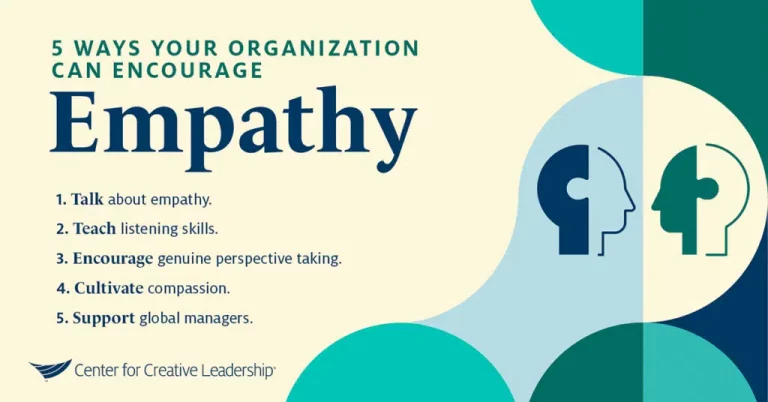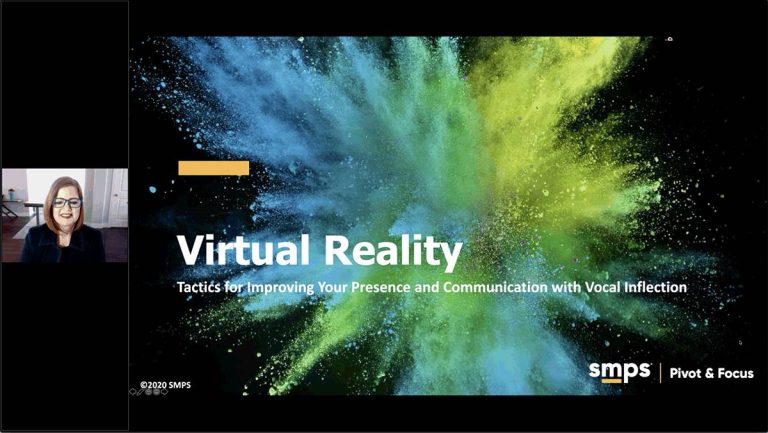360-Degree Communication
360-Degree Communication refers to a comprehensive approach that integrates various communication channels to convey a message to the target audience in a multidimensional manner. In today’s fast-paced world, effective communication is essential for businesses to stay competitive and engage with their customers.
By utilizing a 360-degree communication strategy, companies can leverage different channels such as social media, websites, emails, and traditional media to create a cohesive and consistent brand image. This approach allows businesses to reach their target audience at various touchpoints, ensuring maximum impact and message recall.
Furthermore, it enables organizations to gather valuable feedback and insights from customers, thereby enhancing their overall communication strategies. We will delve deeper into the concept of 360-degree communication and discuss its benefits and implementation strategies.
The Importance Of Effective 360-degree Communication
In today’s fast-paced business world, effective communication is essential for the success of any organization. One crucial aspect of communication is a 360-degree approach, which emphasizes the flow of information in all directions, ensuring that messages are exchanged efficiently among all stakeholders. Effective 360-degree communication not only facilitates better understanding, but it also strengthens employee engagement, improves team collaboration, and fosters a positive organizational culture.
Enhancing Employee Engagement
Effective 360-degree communication plays a pivotal role in enhancing employee engagement. When employees feel that their voices are heard and their opinions are valued, they are more likely to be motivated, dedicated, and actively contribute to the organization’s goals. Regular communication channels, such as team meetings, one-on-one discussions, and open forums, create an environment in which employees feel comfortable voicing their ideas and concerns. This sense of empowerment leads to increased job satisfaction and loyalty, resulting in higher levels of productivity.
Improving Team Collaboration
360-degree communication significantly improves team collaboration by fostering an environment of openness and transparency. When information is shared freely among team members, it prevents silos and encourages knowledge exchange. This ensures that everyone is on the same page, working towards a common objective. Collaboration tools, such as project management software and team communication platforms, aid in seamless information sharing, timely updates, and the efficient completion of tasks. By enabling effective 360-degree communication, teams can work together harmoniously, leveraging collective skills and expertise to achieve exceptional results.
Fostering A Positive Organizational Culture
A positive organizational culture is crucial for attracting and retaining top talent. By implementing effective 360-degree communication practices, organizations create a culture of trust, respect, and openness. Employees who feel valued and included in decision-making processes are more likely to be engaged and satisfied with their work environment. This positive culture not only improves employee morale but also strengthens teamwork, innovation, and overall organizational performance. By fostering mutual understanding and collaboration through 360-degree communication, organizations can establish a work culture that nurtures and empowers its employees, leading to long-term success.

Credit: www.linkedin.com
Key Components Of 360-degree Communication
In today’s fast-paced and interconnected world, effective communication is more important than ever. 360-Degree Communication is a holistic approach that involves the exchange of information, thoughts, and ideas across all levels and departments within an organization. This ensures that every team member has the necessary information to make informed decisions and contribute to the overall success of the company. Let’s explore the key components of 360-Degree Communication and how they can enhance collaboration and productivity:
Open And Transparent Communication
Open and transparent communication is the foundation of a successful organization. It involves creating a culture of trust and honesty where all team members feel comfortable sharing their thoughts, concerns, and ideas. By fostering an environment of open communication, organizations can break down barriers and encourage collaboration. This promotes a sense of ownership and accountability among employees, leading to improved productivity and innovation.
Active Listening And Feedback
Active listening and feedback play a vital role in effective communication. Active listening involves more than just hearing; it requires fully engaging with the speaker and understanding their perspective. By actively listening, individuals can gain new insights, identify potential challenges, and collaborate effectively. Providing constructive feedback is equally important, as it allows for continuous improvement and ensures that everyone’s voices are heard.
Utilizing Multiple Communication Channels
To ensure effective communication, organizations must utilize multiple communication channels. This allows for information to flow freely and reach individuals through their preferred methods. Whether it’s face-to-face meetings, emails, instant messaging, or video conferences, leveraging various channels ensures that everyone stays informed and connected. By adapting to different communication styles, organizations can cater to diverse preferences and enable effective collaboration.
Clear And Concise Messaging
Clear and concise messaging is crucial for imparting information effectively. Messages should be communicated in a way that is easy to understand and avoids confusion or ambiguity. By using simple language, avoiding jargon, and providing key points upfront, messages can be conveyed efficiently. This allows team members to grasp information quickly, make informed decisions, and take appropriate actions without wasting time or effort.
By implementing these key components, organizations can foster a culture of effective communication, leading to improved collaboration, increased productivity, and a more cohesive work environment.
Challenges And Solutions In Implementing 360-degree Communication
Implementing 360-degree communication within an organization can bring numerous benefits, such as improved collaboration, increased efficiency, and better decision-making. However, like any major change, there are challenges that may arise along the way. By proactively addressing these challenges, organizations can find solutions to ensure successful implementation. In this article, we will explore three key challenges and their corresponding solutions when it comes to implementing 360-degree communication.
Overcoming Communication Barriers
Effective communication is the cornerstone of any successful organization. However, various barriers can hinder the flow of information across departments, levels, and teams. These barriers include differences in language, culture, and communication styles, as well as physical distance and hierarchical structures.
To overcome these barriers, organizations can take the following steps:
- Promote cultural sensitivity and inclusivity through diversity training programs.
- Encourage open and transparent communication channels across all levels of the organization.
- Utilize technology tools that facilitate real-time communication and collaboration, such as chat platforms and video conferencing.
- Establish cross-functional teams to promote collaboration and understanding between different departments or teams.
Dealing With Resistance To Change
Change can be met with resistance, and the implementation of 360-degree communication is no exception. Employees may be reluctant to adopt new communication practices due to fear, uncertainty, or a preference for traditional hierarchies.
To address resistance to change, organizations can take the following actions:
- Communicate the benefits of 360-degree communication, emphasizing how it can improve individual and team productivity, decision-making, and job satisfaction.
- Involve employees in the decision-making process and encourage their feedback.
- Provide training and support to help employees develop new communication skills and adapt to the changes.
- Recognize and reward individuals or teams that actively embrace and demonstrate effective 360-degree communication.
Providing Adequate Training And Resources
Implementing 360-degree communication requires individuals to possess the necessary skills, knowledge, and resources to effectively collaborate and communicate across different channels and platforms.
Organizations can address this challenge by:
- Investing in comprehensive training programs that equip employees with the various communication techniques and tools needed for successful collaboration.
- Providing ongoing support and resources to help employees navigate and utilize new communication platforms and technologies.
- Creating a centralized knowledge base or intranet where employees can access information, best practices, and resources related to 360-degree communication.
- Offering mentoring or coaching programs to support employees as they develop their communication skills.
By proactively addressing the challenges and implementing the solutions mentioned above, organizations can foster a culture of effective and inclusive communication, leading to increased productivity, innovation, and overall organizational success.

Credit: www.facebook.com
Best Practices For Implementing 360-degree Communication
In today’s fast-paced and collaborative work environments, effective communication is crucial for the success of any organization. 360-degree communication refers to the holistic approach that involves open and transparent communication across all levels and departments.
Establishing A Communication Strategy
To implement 360-degree communication successfully, it is essential to establish a clear and comprehensive communication strategy. This strategy should outline the organization’s goals, objectives, and the specific channels and tools to be used for communication.
It is important to consider the diverse needs of employees and stakeholders when developing the strategy. By taking into account factors such as preferred communication channels, cultural differences, and language barriers, the organization can ensure effective and inclusive communication.
Promoting Employee Voice And Participation
Encouraging employees to share their thoughts and ideas is an integral part of 360-degree communication. By promoting employee voice and participation, organizations can foster a culture of collaboration and innovation.
Engaging employees in decision-making processes and seeking their input not only leads to better outcomes but also boosts employee morale and commitment. Providing platforms and opportunities for employees to express themselves and contribute to discussions enables a more inclusive and empowered work environment.
Encouraging Regular Communication Assessments
Regular assessments of the effectiveness of communication channels and practices are essential to ensure continuous improvement and adaptability. By regularly reviewing and evaluating the communication processes, organizations can identify areas of improvement and make necessary adjustments.
This can involve seeking feedback from employees through surveys or anonymous suggestion boxes, analyzing the metrics of communication tools, or conducting focus groups to gather insights and opinions. This continuous assessment enables organizations to stay responsive to changing needs and preferences, leading to more efficient and meaningful communication.
Building A Feedback Culture
In a 360-degree communication approach, feedback plays a crucial role in facilitating growth and development. Building a feedback culture involves creating an environment where feedback is encouraged, valued, and embraced.
Organizations should establish structured feedback mechanisms that allow for timely and constructive feedback to be shared among employees and managers at all levels. This can include regular performance evaluations, one-on-one feedback sessions, or peer-to-peer feedback initiatives.
By nurturing a feedback culture, organizations can improve communication, foster accountability, and promote continuous learning and development.
The implementation of 360-degree communication requires a strategic and inclusive approach that prioritizes transparency, collaboration, and feedback. By applying these best practices, organizations can enhance communication effectiveness and create a positive and engaging work environment.
Case Studies: Successful Implementation Of 360-degree Communication
In today’s fast-paced business environment, effective communication is key to success. Companies that implement 360-degree communication strategies are able to foster collaboration, improve employee engagement, and drive innovation. In this section, we will take a look at three real-life case studies that showcase the power of 360-degree communication in different organizational contexts.
Company X: Driving Innovation Through Open Communication
Company X, a leading technology firm, understands the importance of fostering innovation through open communication channels. By implementing a 360-degree communication strategy, they have been able to break down silos and encourage knowledge sharing across departments.
One way Company X achieved this was by creating a company-wide intranet platform where employees can collaborate, share ideas, and provide feedback. This open communication channel allows employees of all levels to contribute their insights and expertise, resulting in a culture of continuous improvement and innovation.
Moreover, Company X also holds regular town hall meetings where senior executives share company updates and encourage employees to ask questions and provide suggestions. By keeping the lines of communication open at all levels, Company X has been able to harness the collective intelligence of their workforce, leading to breakthrough innovations and staying ahead of the competition.
Company Y: Transforming Company Culture With Effective Feedback
Company Y, an established consumer goods company, recognized the importance of feedback in driving employee growth and improving company culture. Through their 360-degree communication strategy, they have transformed their workplace into a feedback-rich environment.
One key initiative implemented by Company Y is the establishment of regular performance reviews that involve feedback from peers, subordinates, and superiors. This comprehensive feedback process ensures that employees receive a well-rounded assessment of their performance and have opportunities for growth and development.
In addition, Company Y also encourages continuous feedback through an anonymous suggestion box. This allows employees to freely express their opinions and share their ideas without fear of judgment. By actively seeking and listening to feedback from all levels of the organization, Company Y has fostered a culture of transparency, trust, and continuous improvement.
Company Z: Improving Collaboration With Multichannel Communication
Company Z, a global logistics company, realized the need for effective collaboration among their dispersed teams. Through the implementation of a multichannel communication strategy, they have successfully improved collaboration and efficiency.
One of the ways Company Z achieved this was by utilizing project management software that enables real-time communication and collaboration among team members, regardless of their geographic location. This ensures that everyone is on the same page and can contribute their expertise to project success.
Additionally, Company Z introduced instant messaging platforms for quick and informal communication between team members. This has not only improved responsiveness and reduced email overload but also facilitated the exchange of ideas and knowledge sharing in a timely manner.
By leveraging multiple communication channels, Company Z has created a collaborative work environment that empowers teams to work together seamlessly and deliver exceptional results.

Credit: er.educause.edu
Frequently Asked Questions For 360-degree Communication
What Is Communication 360 Degree?
Communication 360 degree is a comprehensive approach to communication that involves all stakeholders and channels. It ensures effective and consistent messaging across different platforms to achieve desired outcomes and build stronger relationships.
What Is 360 Or Integrated Communication?
360 or integrated communication is a strategic approach that combines various marketing channels, both online and offline, to deliver a cohesive and consistent message to the target audience. It ensures that all aspects of communication are aligned and work together to achieve the overall marketing goals.
What Is 360-degree Communication?
360-Degree Communication is a comprehensive approach that ensures information flows seamlessly across all channels to create a cohesive and consistent message.
How Does 360-degree Communication Benefit Businesses?
360-Degree Communication enhances brand image, increases customer engagement, and improves overall communication effectiveness for businesses.
Which Channels Are Included In 360-degree Communication?
360-Degree Communication encompasses all channels such as social media, email marketing, public relations, advertising, and direct communication with customers.
Conclusion
Effective communication is essential for any business. Through 360-degree communication, companies can connect with their audience on multiple channels, fostering engagement and building trust. By utilizing various platforms, such as social media, email marketing, and website content, businesses can create a cohesive and comprehensive communication strategy.
This boosts brand awareness, increases customer satisfaction, and ultimately drives business growth. Stay ahead of the competition by embracing 360-degree communication and harnessing its power to connect and engage with your audience on all fronts.



